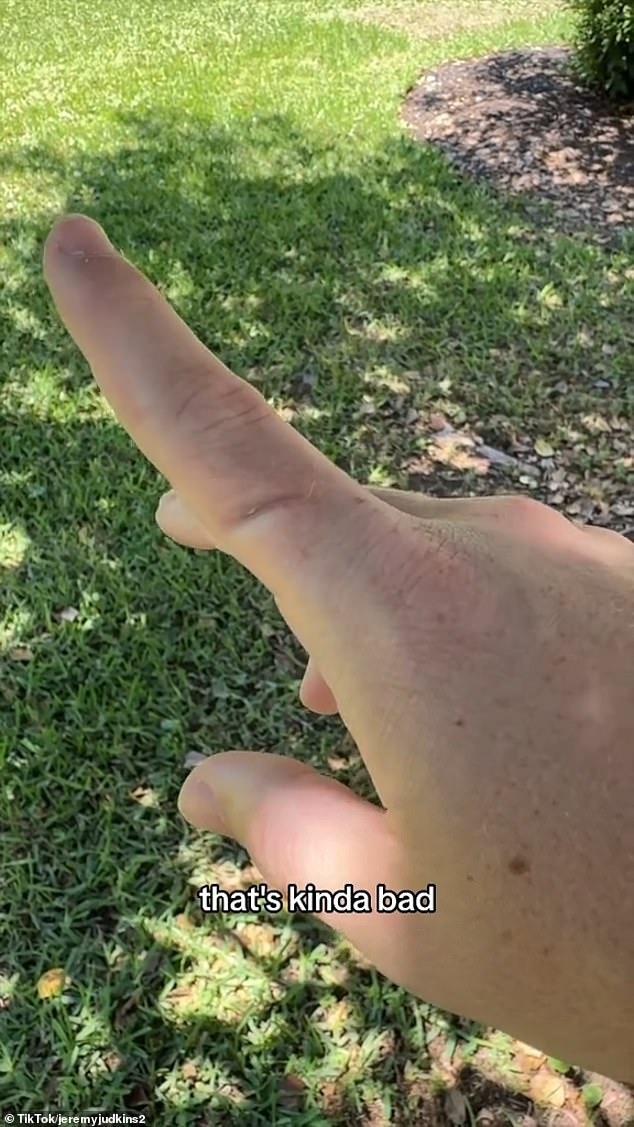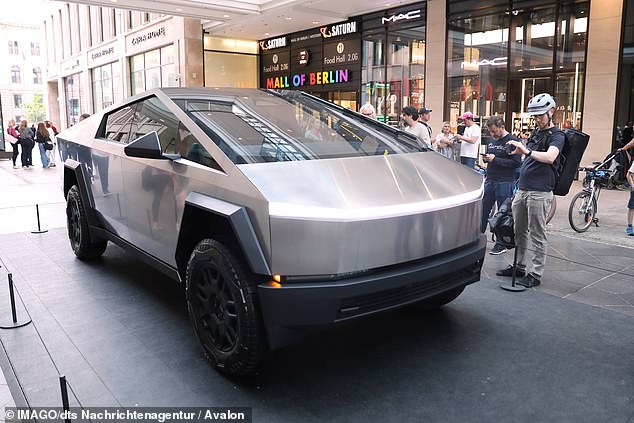Cybertruck owner tests ‘death trap’ feature that Tesla claims to have fixed… and almost loses his finger
- The owner wanted to see if the software update resolved the frunk problem
- The update added anti-squeeze to the hatch, which helped detect objects in the road
- READ MORE: Customers discover a design flaw in Tesla’s $80,000 Cybertruck
A Cybertruck owner has tested the ‘deathtrap’ feature after Tesla claimed that a software update now helps the frunk detect when an object gets in the way of the hatch closing.
The problem came to light in January after reviewers discovered that the hatch would close even if something was placed in the way, leading some to believe the flaw could potentially cut off someone’s finger.
Jeremy Judkins put it to the test in a new video shared to TikTok, in which he first started a banana that was saved by the new software update.
During the main event, he stuck his finger inside, watching the hatch slowly close and his appendage getting stuck inside.
TikToker Jeremy Judkins experimented with the updated software that claimed to make the frunk safer, by placing his finger in the open space and watching the hatch slowly close
When the frank hatch came back up, Judkins removed his finger and discovered a cut in the skin.
“I was afraid for my finger for a moment,” Judkins said, showing that his finger was throbbing.
Tesla released the software update this month after reports surfaced that the frunk might cut off body parts.
Instead of jamming, the hatch can now detect when something is in the way and reopen immediately.
Anti-pinch sensors and anti-pitch locks have been an increasingly common feature of vehicles since the early 2000s, especially on automatic windows, making their absence in the Cybertruck unusual.

The hatch closed completely around his finger, trapping the appendage until the hood came loose – leaving a gash on his skin

Elon Musk handed over the first Cybertruck keys to owners on November 30 during a livestream event at Tesla’s Gigafactory in Austin, Texas. Since then, however, the futuristic truck has been plagued with problems
An August 2016 Tesla software update removed the functionality of the pinch sensors on Model X’s futuristic gull-wing doors to prevent “phantom detections.”
Judkins first tested the update with a banana, which was unharmed: the hatched doll popped right back up.
The Cybertruck failed to detect a carrot and cut the vegetable in half.
Although the software didn’t save Judkins’ finger, it did a better job than the carrot.
The problem came to light in January when reviewers began sharing the results of the now-viral “carrot test,” which Judkins showed off in his TikTok.
‘I’m just going to close the door like a normal person closes the door. Nothing too hard,” said one reviewer just before gently showing the Cybertruck’s driver’s side door and chopping off the ends of two large, sturdy carrots.
“You might want to run your fingers around the Cybertruck,” as TikTok user @molesrcool put it. “You might end up losing them.”
Elon Musk handed over the first Cybertruck keys to owners on November 30 during a livestream event at Tesla’s Gigafactory in Austin, Texas.
However, the futuristic truck has since been plagued with problems – an issue that led to Tesla recalling nearly 4,000 units in transit due to a faulty accelerator pedal cover.
The US National Highway Traffic Safety Administration (NHTSA) announced in April that Musk’s company will replace or repair the accelerator pedal free of charge and that owners will be notified through letters sent to them in June.
